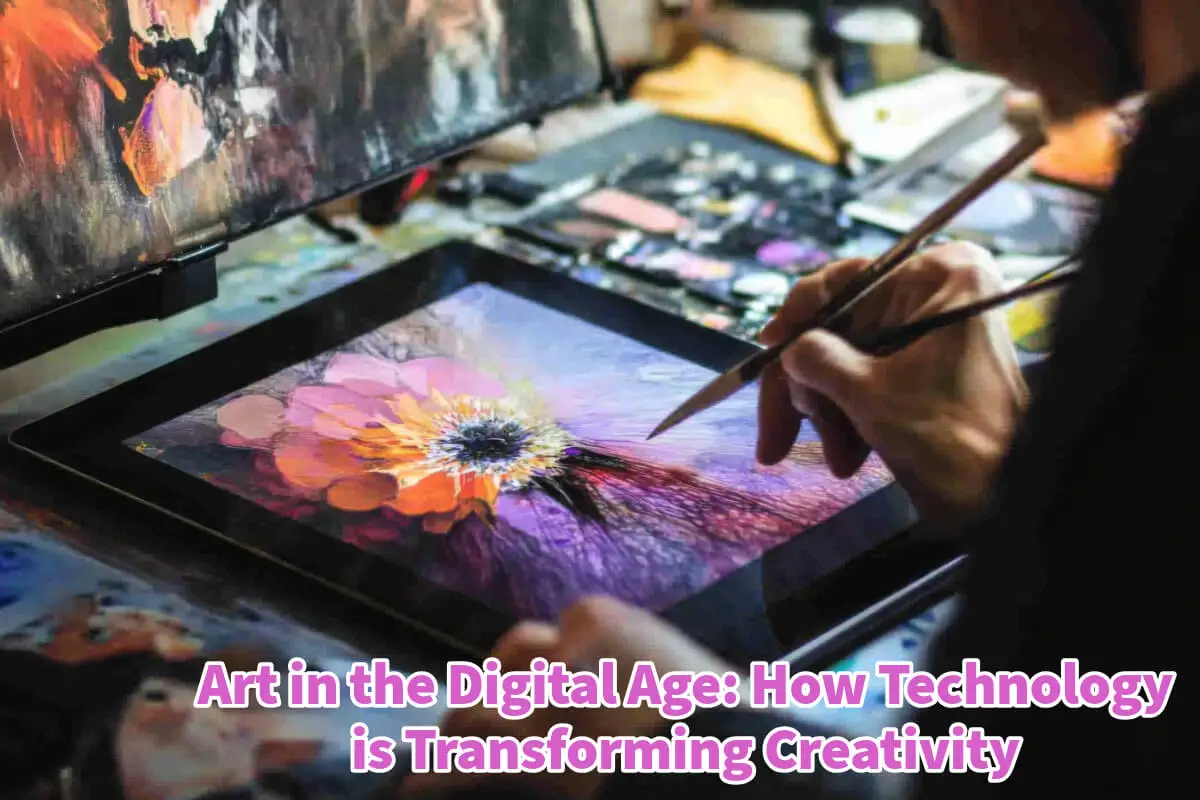The intersection of art and technology has ushered in a new era of creativity, fundamentally reshaping how art is created, shared, and appreciated. From the advent of digital painting software to the groundbreaking capabilities of artificial intelligence (AI), technology is expanding the boundaries of artistic expression.
These innovations provide artists with new tools and challenge traditional definitions of art itself. We will explore how technology and AI are revolutionizing the art world. We’ll examine the rise of digital art, the influence of AI on creativity, and the impact of these advancements on how we perceive and engage with art.
Table of Contents
- The Rise of Digital Art
- Artificial Intelligence and Creativity
- Sharing and Appreciating Art in the Digital Age
- Challenges and Ethical Questions
- The Future of Art and Technology
- How to Embrace Art in the Digital Age
- Technology as a Catalyst for Creativity
- Related Questions
The Rise of Digital Art
What is Digital Art?
Digital art refers to artwork created or manipulated using digital technology. Unlike traditional mediums like oil painting or sculpture, digital art leverages tools like graphic tablets, software, and virtual reality (VR) environments.
Platforms like Adobe Photoshop, Procreate, and Blender empower artists to craft intricate designs, 3D models, and animations that were once impossible with conventional methods.
Breaking Barriers to Accessibility
One of the most profound impacts of digital tools is their accessibility. Anyone with a smartphone or tablet can experiment with digital art, democratizing creativity. Aspiring artists no longer need expensive studio setups; a simple drawing app and stylus can open the door to artistic exploration.
Endless Possibilities in Digital Mediums
Digital art offers unparalleled versatility. Artists can experiment with layers, textures, and effects, undo mistakes instantly, and collaborate remotely with others in real-time. This flexibility has led to entirely new genres, such as glitch art, pixel art, and digital surrealism.
The digital medium also redefines traditional art forms, with technologies like projection mapping and interactive installations creating immersive, multi-sensory experiences.
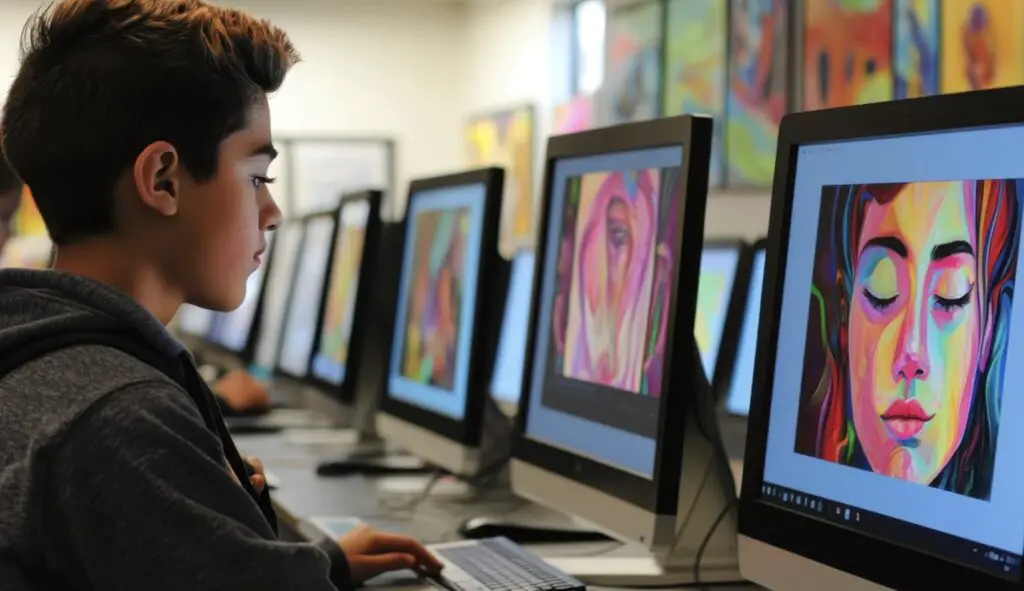
Artificial Intelligence and Creativity
AI as a Creative Partner
Artificial intelligence is no longer limited to solving mathematical problems or automating tasks. Today, AI systems like OpenAI’s DALL-E, MidJourney, and DeepArt create original artwork, generate music, and even write poetry.
These systems use machine learning algorithms to analyze vast datasets of existing art, allowing them to generate new works that mimic or reinterpret artistic styles.
AI collaborates with human creators, augmenting their abilities rather than replacing them. Artists can use AI to brainstorm ideas, visualize concepts, or generate backgrounds, leaving more time to focus on their unique vision.
The Debate: Can AI Create True Art?
The rise of AI-generated art has sparked debate among critics and creators. Some argue that art requires human emotion and intentionality, qualities AI lacks.
Others contend that creativity is not limited to human beings and that AI offers a new lens through which we can explore the nature of art.
One famous example is Edmond de Belamy, an AI-generated painting that sold for $432,500 at auction in 2018. The piece, created by training an algorithm on 15,000 portraits, challenged traditional notions of authorship and creativity.
While some dismissed it as a gimmick, others hailed it as a milestone in the evolution of art.
AI Tools Empowering Artists
AI also revolutionizes the creative process through tools that enhance efficiency and innovation. For example:
- Generative Adversarial Networks (GANs): Used to create hyper-realistic images or surreal, abstract compositions.
- Style Transfer Algorithms: Enable artists to apply the aesthetic of one artwork to another, merging influences in fascinating ways.
- AI-Assisted Design Software: Programs like Runway ML and Artbreeder allow creators to easily manipulate images, bridging the gap between imagination and execution.
Sharing and Appreciating Art in the Digital Age
The Role of Social Media
Platforms like Instagram, Pinterest, and TikTok have transformed how art is shared and discovered. Artists can now reach global audiences without the need for gallery representation, building communities, and receiving feedback in real-time.
Social media algorithms also play a pivotal role in determining which artworks gain visibility, creating a dynamic, albeit competitive, ecosystem.
Digital Marketplaces and NFTs
Non-fungible tokens (NFTs) represent a groundbreaking development in buying and selling digital art. These blockchain-based assets provide proof of ownership for digital works, enabling artists to monetize their creations in unprecedented ways.
Platforms like OpenSea and Rarible have facilitated millions of dollars in NFT sales, empowering creators to earn directly from their art while fostering new collector-artist relationships.
However, NFTs have also sparked controversy due to their environmental impact and speculative nature. Critics argue that the NFT boom prioritizes profit over artistic integrity, while supporters see it as a revolutionary tool for artists’ financial independence.
Virtual and Augmented Reality in Art Appreciation
Technology is reshaping the way audiences engage with art through virtual reality (VR) and augmented reality (AR). VR galleries allow users to explore exhibitions from their homes, while AR applications overlay digital artworks onto physical spaces. These immersive experiences break down geographical barriers, making art accessible to anyone with an internet connection.
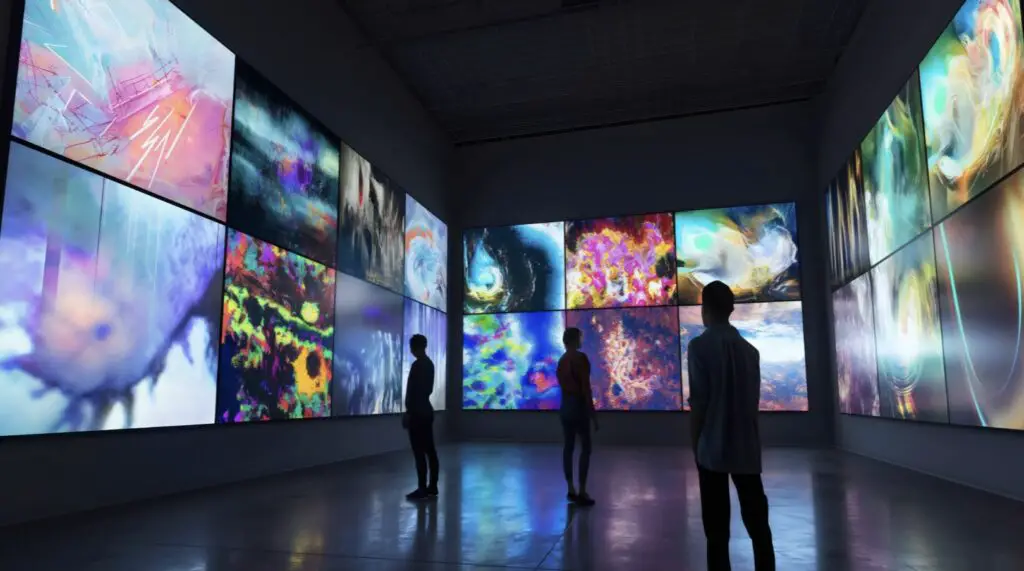
Challenges and Ethical Questions
Copyright and Authorship
As technology enables new forms of creativity, it also raises questions about authorship and copyright. Who owns an artwork created by AI? Should the creators of the algorithms receive credit, or does the user guiding the AI hold the rights?
These questions remain largely unresolved and highlight the need for updated legal frameworks to address the complexities of digital art.
The Digital Divide
While technology democratizes art for many, it also exacerbates existing inequalities. Not everyone has access to high-end devices or stable internet connections, limiting participation in the digital art revolution. Efforts to bridge this gap are essential to ensure that the benefits of technological innovation are distributed equitably.
Over-reliance on Technology
There’s also concern that over-reliance on digital tools could stifle creativity. With AI generating ideas and designs, some worry that human artists might lose their unique voice. Striking a balance between leveraging technology and maintaining personal authenticity is crucial for the future of art.
The Future of Art and Technology
Hybrid Art Forms
The future of art lies in hybridity—a seamless integration of traditional techniques with cutting-edge technology. Imagine sculptures that respond to environmental changes, paintings that evolve using AI, or performances enhanced by real-time holographic projections.
These hybrid forms will continue to blur the lines between disciplines, creating new dimensions of artistic expression.
AI Advancements and Personalization
As AI continues to evolve, it will offer even more sophisticated tools for personalization and customization. Artists can create tailored experiences for audiences, using algorithms to adapt works to individual preferences.
This could lead to an era where art becomes deeply interactive and participatory.
Sustainability and Ethical Tech
The art world must also address the environmental challenges posed by technology, particularly in the realm of NFTs and energy-intensive digital practices. Sustainable innovations, such as eco-friendly blockchain solutions and energy-efficient tools, will ensure that technology enhances creativity without compromising the planet.
How to Embrace Art in the Digital Age
1. Explore Digital Art Tools
For aspiring creators, the digital age offers an abundance of resources. Experiment with tools like Procreate, Canva, or Blender to explore your creative potential. Don’t be intimidated by technology—many platforms offer beginner-friendly tutorials to get you started.
2. Engage with Online Communities
Join online communities like DeviantArt, ArtStation, or Behance to connect with fellow artists, share your work, and gain inspiration. These platforms foster collaboration and provide valuable feedback to refine your craft.
3. Dive into VR and AR Experiences
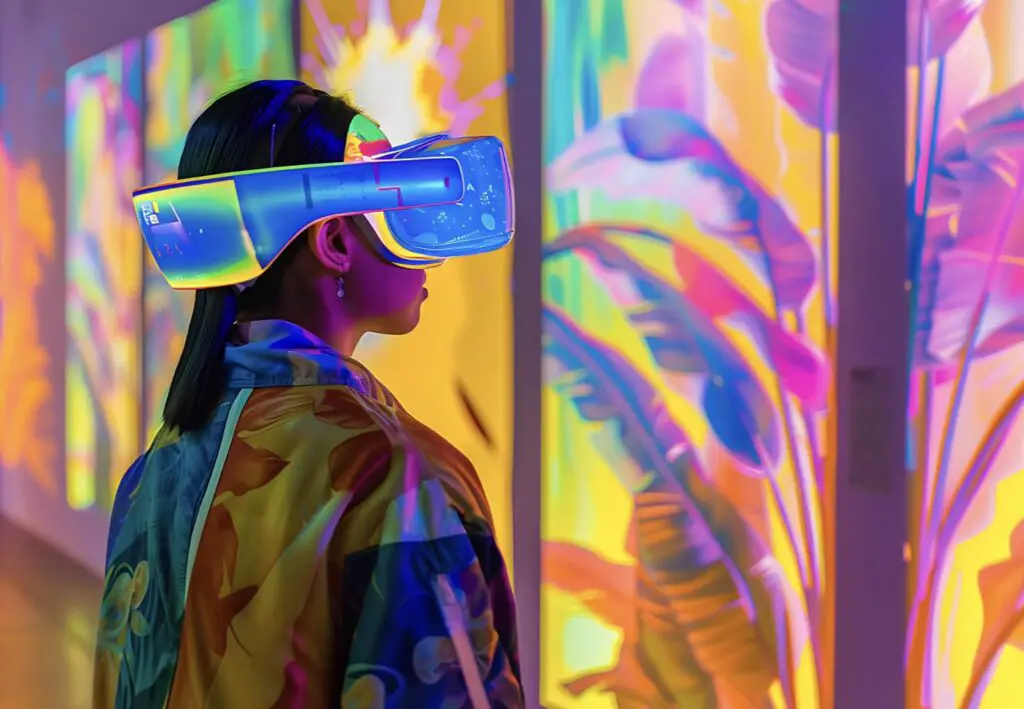
Immerse yourself in virtual and augmented reality art experiences. Visit VR galleries or use AR apps to explore how technology enhances art appreciation.
4. Learn About NFTs and Digital Ownership
If you want to monetize your digital art, explore the world of NFTs. Research platforms, understand the risks, and experiment with creating your blockchain-backed artworks.
5. Balance Technology with Tradition
While embracing digital tools, don’t abandon traditional art forms. Experiment with a mix of analog and digital techniques to enrich your creative practice and maintain a unique voice.
Technology as a Catalyst for Creativity
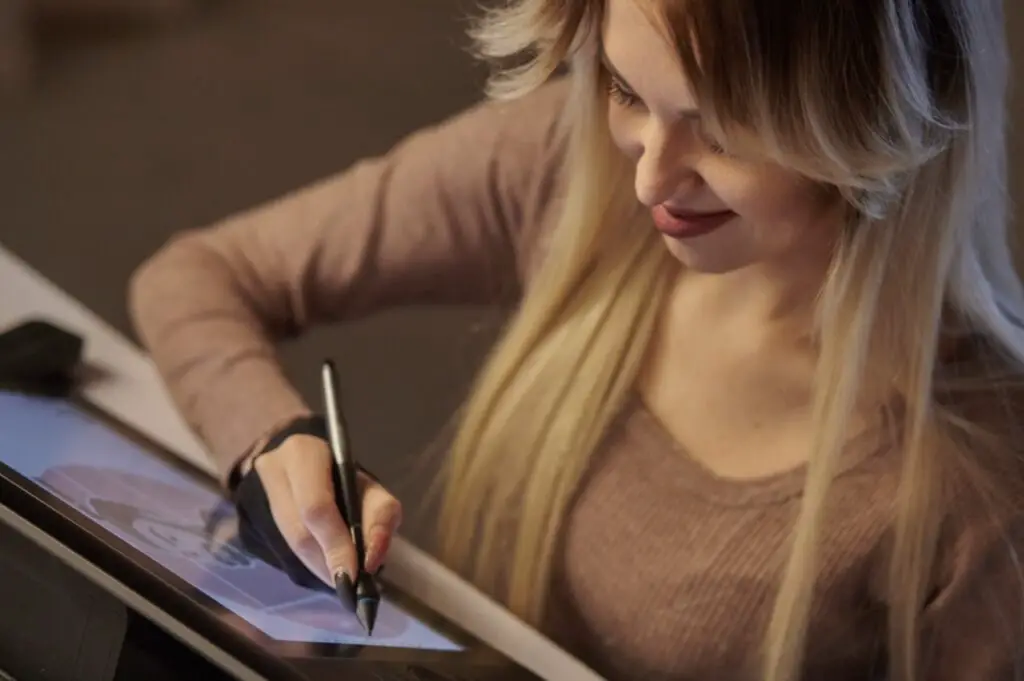
Art in the digital age is a testament to human ingenuity and adaptability. From AI-generated masterpieces to immersive VR exhibitions, technology unlocks new realms of creativity and redefines how we experience art.
While ethical dilemmas and environmental concerns must be addressed, the potential for innovation and inclusivity is boundless.
As we stand at the crossroads of tradition and technology, one thing is clear: the future of art is a collaborative dance between human creativity and machine intelligence. Whether you’re an artist, collector, or enthusiast, engaging with the ever-evolving art world has never been a more exciting time.
Call to Action:
How has technology influenced your perception of art? Share your thoughts in the comments below, or explore digital art tools to start your creative journey. Let’s celebrate the limitless possibilities of art in the digital age!
Anita Louise Art is dedicated to art education, great artists, and inspiring others to find and create their art. We love art that uplifts and inspires. #ArtToMakeYouSmile! #ArtToMakeYouHappy!
If you want to see any of my art, you can find out more by clicking here. If you are interested in what inspires me and my paintings, you can discover more by clicking here.
We have a free newsletter and would love you to be part of our community; you can subscribe to the newsletter by clicking here. If you have any questions, I would be happy to talk to you at any time. You can reach me, Anita, by clicking here.
Subscribe to our Anita Louise Art YouTube Channel with great videos and information by clicking here.
Join us for our podcast “5 Minutes With Art.” Spend 5 minutes a week with us to discover and learn about great art and artists. You can find out more about our podcast by clicking here.
Related Questions
Harnessing AI For Artistic Innovation: Exploring DALL-E And Procreate
In the modern landscape of art creation, the fusion of AI-generated art with traditional digital techniques offers artists an expansive array of possibilities. This blend extends the creative palette and ushers in a new era of artistic expression where technology meets tradition. AI tools like DALL-E, which can generate detailed images from textual descriptions, provide a starting point that artists can further refine, alter, or expand upon using digital art platforms like Procreate.
By clicking here, you can learn more by reading Harnessing AI For Artistic Innovation: Exploring DALL-E And Procreate.
Fine Art Definition – Exploring Fine Art
Fine art, a captivating and multifaceted realm of creative expression, has captivated and stirred the human spirit for centuries. Its origins are deeply intertwined with aesthetics, the pursuit of beauty, and the boundless realms of artistic vision. Beyond practical purposes, fine art serves as a conduit for stirring emotions, igniting contemplation, and igniting meaningful discourse.
By clicking here, you can learn more by reading Fine Art Definition – Exploring Fine Art.
Forms Of Art Definition, Comprehensive Guide To Forms Of Art
Beyond colors, lines, and texture, form shapes our interaction with art, influencing its creation and interpretation. This post aims to demystify the concept of form in art. We will journey from its definition to its types, from its role in sculptures to its significance in two-dimensional works like paintings and drawings.
By clicking here, you can learn more by reading Forms Of Art Definition, Comprehensive Guide To Forms Of Art.

